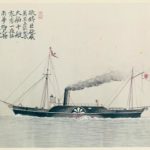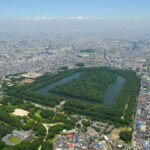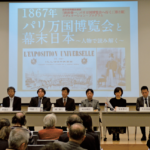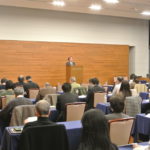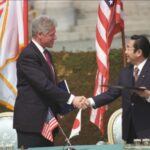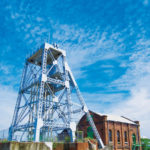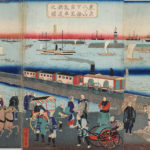In July 2015 UNESCO’s World Heritage Committee approved the inscription of “Sites of Japan’s Meiji Industrial Revolution” on the World Heritage List. In this sixth article of a series introducing the twenty-three components of the inscription, we take a look at the eight sites listed in Nagasaki, Nagasaki Prefecture.
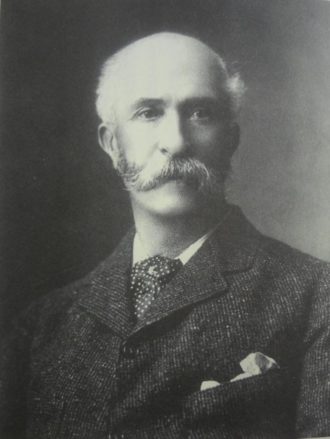
Thomas Blake Glover (1838–1911), the first non-Japanese to be awarded the Order of the Rising Sun (second class). Among Glover’s achievements were the construction of Japan’s first modern coal mine and slip dock, and the introduction to Japan of British engineers who would build Japan’s first railroads, iron bridges, lighthouses and more.
Early industrial development in Nagasaki resembles that in nearby Mietsu (introduced in the previous installment of this series), with industrialization in both locations having been catalyzed by Dutch learning acquired in Dejima, the tiny island off Nagasaki which was the only place where international trade and exchange was permitted for the majority of the Edo period (1603–1867) under the Tokugawa Shogunate’s “isolationist” foreign policy. An important difference in Nagasaki, however, is the role that British — specifically Scottish — learning would also come to play.
In 1853, ever-increasing pressure on the Shogunate in the form of threatening foreign fleets and unrest in the domains led the bakufu government in Edo (Tokyo) to lift its ban on the construction and ownership of large ships. To further bolster the nation’s seafaring capabilities, the Shogunate established the Nagasaki Naval Training Center in 1855 and Nagasaki Ironworks in 1857 (completed in 1861), choosing the port city in faraway Kyushu for its accessibility to Dutch expertise and technologies in Dejima, including of course large ships.
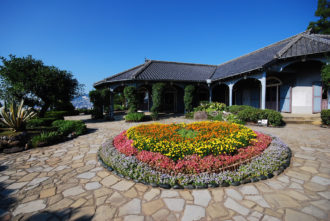
World Heritage: Located in Nagasaki’s former foreign settlement on a hill overlooking the harbor, Thomas Blake Glover’s house also served as his office and was the venue for meetings with clan leaders plotting to bring down the Tokugawa Shogunate and unify Japan under the Emperor. Built in 1863, the residence is located close to other historic buildings from the period in what is known today as “Glover Garden.”
COURTESY OF THE WORLD HERITAGE COUNCIL FOR THE SITES OF JAPAN’S MEIJI INDUSTRIAL REVOLUTION
In 1863 and 1864, the enduring weakness of Japanese defenses was ruthlessly exposed by punitive British naval attacks in, respectively, Kagoshima in Kyushu and Shimonoseki, just across the water in southwestern Honshu. Scottish merchant Thomas Blake Glover (1838–1911), who had moved to Nagasaki in 1859 after the opening of the treaty ports, now began to make a name for himself, serving as a gunrunner to the restless clans in Kyushu.
Glover’s support of the anti-shogun rebel cause at this time, which included helping to smuggle out young Japanese men to be educated in Britain, made him not only a small fortune but also influential friends, among them Ito Hirobumi, who would become Japan’s first prime minister after the 1868 revolution, and Inoue Kaoru, the first foreign minister. Glover’s role in bringing about the Meiji Restoration is not to be underestimated.
But what of the industrial revolution, which is the subject of this series? Here too Glover’s role was crucial.
When the rebels finally toppled the Tokugawa Shogunate in early 1868, Glover launched a number of game-changing ventures. In a joint enterprise with local leaders, Glover had invested in the establishment of Nagasaki Shipyard, primarily to facilitate ship repairs. The ships being imported at the time, mostly by Western traders, were typically older vessels in constant need of repair. In 1869, Glover & Co. introduced Japan’s first steam-powered slip dock here, the (World Heritage) Kosuge Slip Dock, importing hauling machinery from Scotland that revolutionized ship repair work.
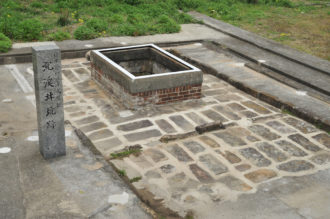
World Heritage: The Hokkei well shaft at Takashima coal mine. Modern coal mining in Japan began on the island of Takashima when Glover and Co., commissioned by the Nabeshima clan of present-day Saga Prefecture, brought in British mining technology and engineers to better exploit the lucrative coal deposits. Using a steam engine located outside a vertical mine shaft — a first for Japan — Glover and Co. excavated about 300 tons of coal daily from a seam 43 meters underground. Flooding of the island mine led to its abandonment in 1876, but Mitsubishi saw its potential and resumed mining of the seam in 1881. The Takashima coal mine fueled Mitsubishi’s extensive steamship fleet and underpinned its emergence as one of the world’s leading enterprises. The mine remained in operation until 1986.
COURTESY OF THE WORLD HERITAGE COUNCIL FOR THE SITES OF JAPAN’S MEIJI INDUSTRIAL REVOLUTION
That same year, in partnership with the Hizen (Nabeshima) Clan and with the assistance of Irish engineer Samuel John Morris, Glover also pioneered the first steam-powered mining of a Japanese coal field on the island of Takashima (see box), another enterprise like the slip dock which Mitsubishi would later acquire.
This direct import of western technology and engineers marks the second phase of the Meiji Industrial Revolution. Glover would also import technologies such as Japan’s first steam locomotive, and brought in engineers from Britain such as fellow Scot Richard Brunton who would build Japan’s first lighthouses and iron bridges among other things.
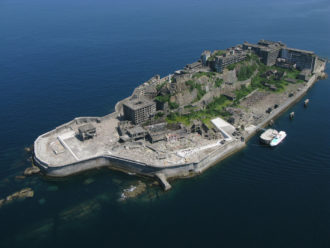
World Heritage: The island of Hashima was purchased by Mitsubishi in 1890 to exploit the same undersea coal seam as that mined on nearby Takashima island. When the island was connected with electricity in 1900, technologies were introduced that saw Hashima become one of the world’s leading offshore collieries. The company utilized the slag from the mine to expand the size of the island artificially, building dormitories, a school and other community facilities upon it. The island took on the appearance of a battleship (gunkan), hence the name by which it became popularly known, Gunkanjima. The mine closed in 1974, and the abandoned island is now a popular sightseeing destination, one of the stars of the Sites of Japan’s Meiji Industrial Revolution.
COURTESY OF THE WORLD HERITAGE COUNCIL FOR THE SITES OF JAPAN’S MEIJI INDUSTRIAL REVOLUTION
In 1890, building on the success of the Takashima mining enterprise, Mitsubishi would launch Japan’s first major undersea coal mining venture on the nearby island of Hashima, which provided access to the same coal deposit as at Takashima. Expertise gained in these early mining ventures in Nagasaki laid the foundation of modern coal mining, accounting for their legacy’s inscription on UNESCO’s World Heritage list.
Iwasaki Yataro, who founded Mitsubishi in 1870, was among the influential friends of Glover from the pre-1868 days of rebellion. Iwasaki turned frequently to Glover for support and advice as Mitsubishi grew.
The Mitsubishi Nagasaki Shipyard, formerly the Nagasaki Ironworks, is the location of four component parts of the Meiji Industrial Revolution inscription, namely Mitsubishi No. 3 Dry Dock (1905) and Mitsubishi Giant Cantilever Crane (1909), Mitsubishi Former Pattern Shop (1898) and Mitsubishi Senshokaku Guest House (1904). These components were established in the late Meiji period by which time the shipyard had huge shipbuilding and repair capacities and had become the largest private shipyard in Asia.
The foreign technologies and expertise imported through Nagasaki and Japan’s other open ports were rapidly adopted, improved and disseminated throughout the land, fostering Japan’s rapid modernization.
Alex Hendy, The Japan Journal

View from Glover Garden over Nagasaki harbor today
CREATIVE COMMONS (2011 PHOTO)

